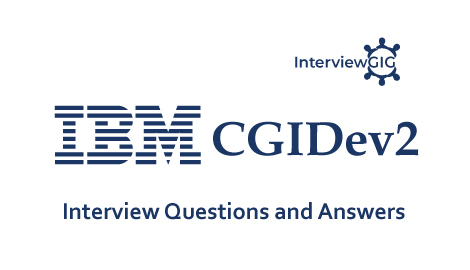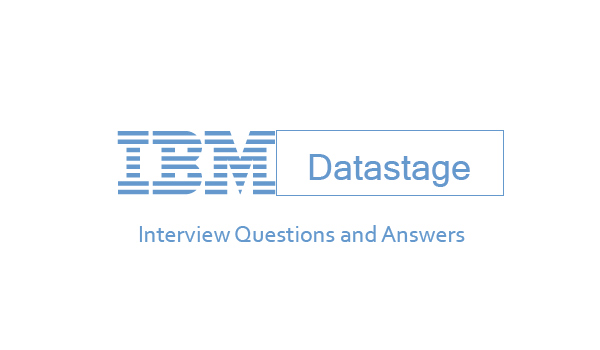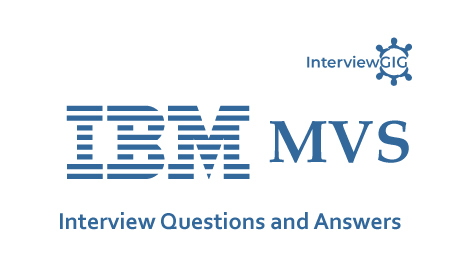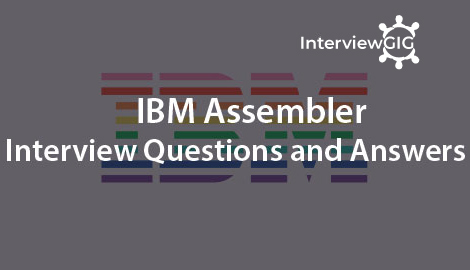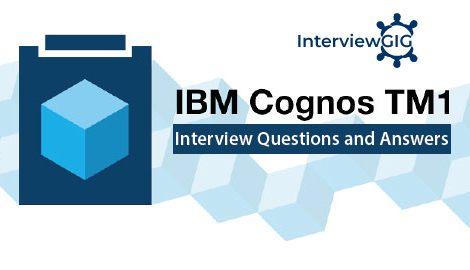What is the difference between Root and Output Root?
Root is used in the Database content changing and in Filter node.
Output Root is used in the ESQL code for a Compute node that creates a new output message based on the input message
Which Interface We Have to Implement when we are going to create an input custom node?
Can you Define Broker, Bar, Execution Group, Scada, and Components of Broker?
BROKER: A broker is a set of execution processes that hosts one or more message flows to route, transform, and enrich inflight messages.
BAR: Flows and sets that are to be deployed are packed in it and sent to configuration manager
EXECUTION GROUP: An execution group is a named grouping of message flows that have been assigned to a broker. The broker enforces a degree of isolation between message flows in distinct execution groups by ensuring that they execute in separate address spaces, or as unique processes.
SCADA: The SCADAInput node is used to receive messages from clients that connect to the broker across the WebSphere MQ Telemetry Transport. SCADA device clients use the MQIsdp protocol to send messages, which are converted by the SCADAInput node into a format recognized by WebSphere Message Broker. The node also establishes the processing environment for these messages.
COMPONENTS OF BROKER: Broker, Configmgr, User name service.
What is parser and difference between parser and format?
A Parser is defined as a program that interprets the bit stream of an incoming message and creates an internal representation of it in a tree structure
Ex: MRM parser
A Format is a physical representation of a message.
Ex: XML wire format
What is Resetcontentdescriptor Node?
Use the ResetContentDescriptor node to request that the message is reparsed by a different parser.
What is user name server and where it is defined?
The User Name Server is an optional runtime component that provides authentication of users and groups performing publish/subscribe operations
What is schema of broker?
A broker schema is a symbol space that defines the scope of uniqueness of the names of resources defined within it. The resources are message flows, ESQL files, and mapping files.
How can we see the error log files in broker?
The Windows Event Viewer is where WebSphere Message Broker writes records to the local system.
Which node is used to change the message in the flow?
Compute Node, Filter Node and ResetContentDescriptor.
What is the use of commit for connection to databases?
Any work that has been done using the respective data source in a message flow (including any actions taken in the node) is committed regardless of the subsequent success or failure of the message flow.
Define Correlation Names?
A correlation name is a field reference that identifies a well-defined starting point in the logical message tree and is used in field references to describe a standard part of the tree format.
What is the differences of Mqinput Node and Input Node?
You must use an Input node to provide the in terminal to a subflow.
The Input node provides an in terminal for an embedded message flow (a subflow).
How many built-in nodes are there? categories them?
WebSphere Message Broker supplies built-in nodes that you can use to define your message flows. For information about each of these nodes, follow the appropriate link below. The nodes listed here are grouped according to the function that they provide.
Input and output
- MQInput node
- MQOptimizedFlow node
- MQOutput node
- MQGet node
- MQReply node
- Publication node
- MQeInput node
- MQeOutput node
- SCADAInput node
- SCADAOutput node
- HTTPInput node
- HTTPReply node
- HTTPRequest node
- Real-timeInput node
- Real-timeOptimizedFlow node
- Input node
- Output node
- JMSInput node
- JMSOutput node
Message manipulation and transformation
- Compute node
- Database node
- DataDelete node
- Datalnsert node
- DataUpdate node
- Extract node
- JavaCompute node
- JMSMQTransform node
- MQJMSTransform node
- Mapping node
- Warehouse node
- XMLTransformation node
Collating requests
- AggregateControl node
- AggregateReply node
- AggregateRequest node
Decision making
- Check node
- Filter node
- FlowOrder node
- Label node
- ResetContentDescriptor node
- RouteToLabel node
- TimeoutControl node
- TimeoutNotification node
- Validate node
Subflow identification
Error handling and reporting
- Throw node
- Trace node
- TryCatch node
What are the perspectives we have?
- Administration Perspective
- Application Development Perspective
- Debugging Perspective.
- Java Perspective (MB 6).
How to create broker from command prompt?
Using mqsicreatebroker command.
What is the uniqueness of mb over ICS?
What is EAI? what are those tools?
Enterprise Application Integration refers to the integration of one or more applications and processes together.
Tools: WBI Message Broker, ICS, WebMethods and Tibco
What is the broker domain?
Group of brokers that coordinate a single configuration manager constitute a Broker Domain.
what are the Performance Monitoring Tools?
WebSphere Application Server, Java Management Extensions (JMX).
Difference between MCA and MQI channels?
A message channel connects two queue managers via message channel agents (MCAs). Such a channel is unidirectional. It comprises two message channel agents, a sender and a receiver, and a communication protocol. An MCA is a program that transfers messages from a transmission queue to a communication link, and from a communication link into the target queue. For bidirectional communication you have to define two channel pairs consisting of a sender and a receiver.
A Message Queue Interface (MQI) channel connects an MQSeries client to a queue manager in its server machine. Clients don’t have a queue manager of their own. An MQI channel is bidirectional.
How to configure MQ?
By using runmqsc <Qmanager> command.
How will you test your flows?
Using Debugging Mode, Trace Node. etc.
What workflow will do?
A message Flow is a sequence of processing steps that execute in the broker when an input message when an input message is received.
How will we use a Cobol copybook in mb?
You can populate your message set with message definitions by importing COBOL copybook files, using either the New Message Definition File wizard or the mqsicreatemsgdefs command line utility.
Types of Messages?
- MRM
- XML
- XMLNS
- XMLNSC
- JMSMap
- JMSStream
- MIME
- BLOB
- IDOC
Explain Deadletter Queue Cases?
- Destination Q is full
- Destination Q doesn’t exist
- Msg too large
- Sender is not authorized to use the destination Q
How many types of clients in MQ?
Two Types
- a Fat Clients
- a Slim Clients
What are MQ commands?
- CRTMQM
- STRMQM
- DLTMQM
- ENDMQM
Difference between circular logging and linear logging?
Circular logging gives you restart recovery. Linear logging gives you both restart recovery and media recovery.
Difference between MQCONN and MQCONNX?
MQCONN (MQSTATE, qManagerName): Connects to a queue manager, which is identified by qManagerName, a string of up to 48 characters. MQSeries sets the connection handle for use in subsequent calls.
MQCONNX (MQSTATE, qManagerName, MQCNO): Connects to a queue manager with options that control the way that the call works. The queue manager is identified by qManagerName, a string of up to 48 characters. MQSeries sets the connection handle (MQSTATE.hconn) for use in subsequent calls.
Difference between MQPUT and MQPUT1?
MQPUT(MQSTATE, MQMD, MQPMO, BUFFER): Adds a message to the queue. The buffer cannot be more that 32767 bytes, but that restriction does not apply if you are using the EGL add statement.
MQPUT1(MQSTATE, MQOD, MQMD, MQPMO, BUFFER): Opens a queue, writes a single message, and closes the queue
How to get the depth of a queue?
By using MQSC property CURDEPTH
What is CVS (concurrent version system)?
It is a repository that will store the previous versions.
Difference between compute and mapping node?
In the compute node we can change the headers but in Mapping node we can’t change.
what are the advantages of compute node?
- To construct one or more new output messages.
- To build a new message using a set of assignment statements.
- To opy messages between parsers
- To convert messages from one code set to another
- To transform messages from one format to another
What is an execution group?
An execution group is a named grouping of message flows that have been assigned to a broker. The broker enforces a degree of isolation between message flows in distinct execution groups by ensuring that they execute in separate address spaces, or as unique processes.
What are the types of trees?
- Message Tree
- Environment Tree
- Local Environment Tree
- Exception list Tree
What is the role of configuration manager?
Connecting to the broker and to deploy the message flows.
What is the Content of the configuration manager repository?
It contains the information of the Broker Domain it is related to.
What is the difference between HCONN and HCONNX?
Hconn is a handle used to connect to Queue manager in MQCONN and MQCONNX api calls.
